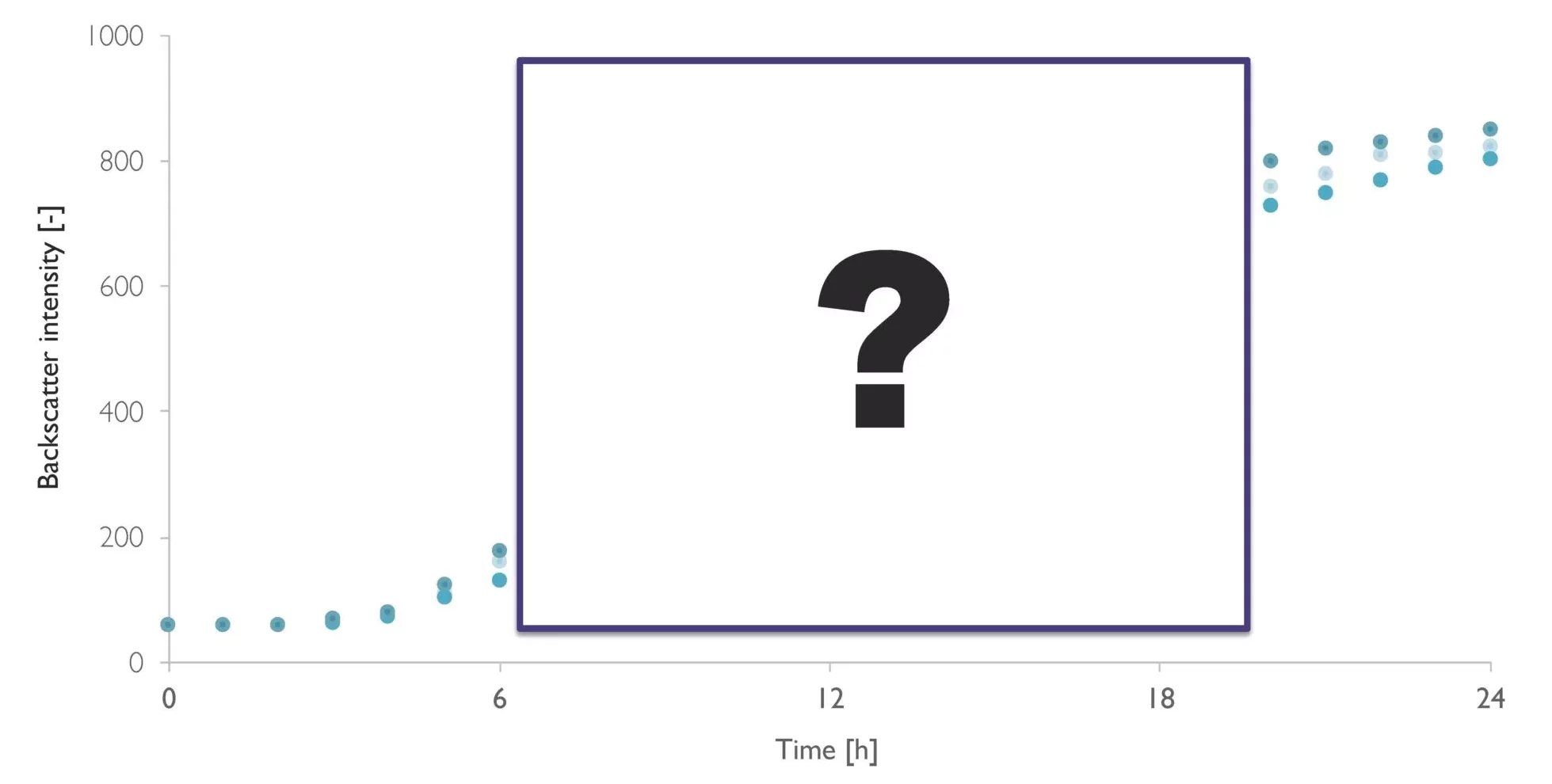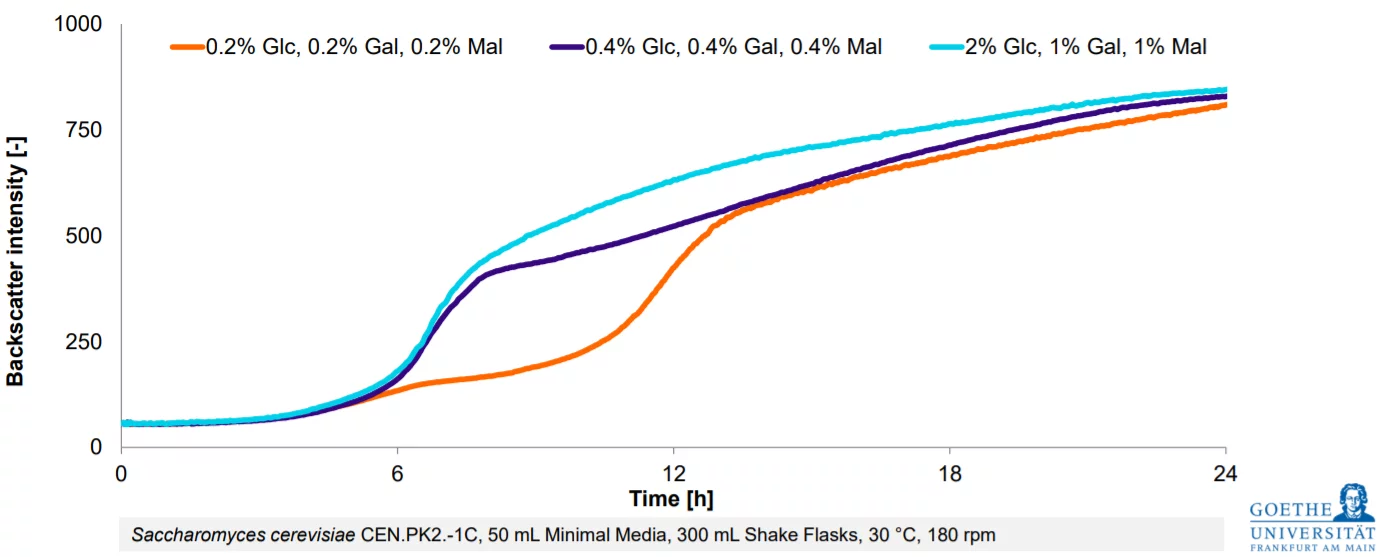Data Spotlight
Using the Cell Growth Quantifier (CGQ) to Explore the Adaptation for Lactose and Galactose Metabolism of Candida intermedia
Background
Peri et al. (2024) presented an outstanding study on the metabolic capacities of Candida intermedia, concentrating on its specific gene clusters that promote the metabolism of lactose and galactose. C. intermedia, unlike many other yeast species, can effectively grow on lactose due to the presence of specialized metabolic clusters. The study identified three primary gene clusters LAC, GAL, and a newly discovered GALLAC cluster that work interdependently to manage lactose and galactose processing. While the Leloir pathway (the primary biochemical pathway for metabolizing galactose in cells), is regulated by the GAL cluster, the GALLAC cluster represents an evolutionary adaptation specific to C. intermedia. This adaptation enables the yeast to efficiently utilize lactose in environments such as dairy byproducts, potentially making C. intermedia an advantageous candidate for industrial processes utilizing lactose-rich waste streams.
Results
%20to%20explore%20Candida%20intermedias%20adaptation%20for%20Lactose%20and%20Galactose%20Metabolism.jpg?width=2000&height=1991&name=Evolving%20efficiency%20by%20using%20Cell%20Growth%20Quantifier%20(CGQ)%20to%20explore%20Candida%20intermedias%20adaptation%20for%20Lactose%20and%20Galactose%20Metabolism.jpg)
Materials & Methods
The team employed the Cell Growth Quantifier (CGQ) to monitor C. intermedia's growth under various conditions. This setup included cultures in lactose and galactose as sole carbon sources, alongside glucose as a control. Using the CGQ in shake flask cultures, they conducted continuous, non-invasive biomass measurements over prolonged cultivation periods of up to 10 days. The CGQ's precise monitoring capabilities were critical, allowing for detailed comparisons between the growth dynamics of wild-type C. intermedia and mutant strains with specific gene cluster deletions.
- Experimental Setup with CGQ: Each strain, including those with deletions in the LAC, GAL, or GALLAC clusters, was grown in minimal media supplemented with either lactose, galactose, or glucose. The CGQ recorded “Back scattered values” as indicators of biomass, which provided real-time growth profiles essential for tracking subtle changes in lag phase and final biomass. This data proved pivotal in understanding the necessity of each gene cluster for lactose and galactose utilization.
- Role of the GALLAC Cluster: Through CGQ data, it became evident that the GALLAC cluster is essential for growth on lactose and significantly enhances growth on galactose. When the GALLAC cluster was deleted, strains failed to grow on lactose entirely and showed delayed growth on galactose. CGQ-enabled tracking stated that strains lacking LAC9_2 exhibited extended lag phases in lactose, emphasizing the cluster's regulatory role in initiating growth.
- Comparison Across Carbon Sources: The CGQ data highlighted that intermedia exhibited the fastest growth rates on lactose among tested strains from the Ascomycota phylum, ranking it among the top five lactose-metabolizing yeasts. For example, wild-type C. intermedia demonstrated rapid lactose utilization with high biomass yield, while mutants deficient in LAC and GALLAC clusters displayed impaired growth patterns. CGQ allowed quantification of these differences, underscoring the functional importance of each cluster.
- Gene Deletion and Growth Profiling: In addition to cluster deletions, the researchers generated mutants for individual genes within the GAL and GALLAC clusters. CGQ data were essential in evaluating these mutants, as strains with deletions in the GAL1 or GAL10 genes showed reduced growth on galactose, while mutants missing GAL1_2 from the GALLAC cluster had inhibited lactose growth. The CGQ profiles illustrated how the GALLAC cluster's transcriptional interplay is necessary for coordinating gene expression across the LAC and GAL clusters.
Conclusion
This research demonstrates the value of the Cell Growth Quantifier (CGQ) in conducting in depth growth studies for understanding metabolic pathways in non-conventional yeasts. By utilizing CGQ, the study effectively tracked growth under various metabolic conditions, providing key insights into how
C. intermedia has evolved specialized mechanisms to optimize lactose and galactose metabolism. These findings enable the way for biotechnological advancements, where CGQ enabled data could guide the engineering of
C. intermedia strains for industrial applications, such as converting lactose-rich whey into valuable bio-based products. The precision of CGQ was important in ensuring how the GALLAC cluster uniquely equips C. intermedia for competitive growth in lactose-heavy environments, supporting its potential role in sustainable bioprocessing.
Reference
Peri KVR, Yuan L, Faria Oliveira F, Persson K, Alalam HD, Olsson L, Larsbrink J, Kerkhoven EJ, Geijer C.2024.A unique metabolic gene cluster regulates lactose and galactose metabolism in the yeast Candida intermedia. Appl Environ Microbiol90:e01135-24.https://doi.org/10.1128/aem.01135-24
Have questions about your application?
Let’s work together to find a solution that works best for you.
From Estimation To High-Resolution Growth Curves


Customer Success Stories
.png)
-Kitana Manivone Kaiphanliam (Washington State University)
